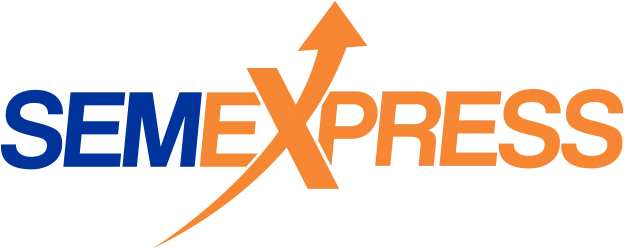
How to Drive Conversions with Personalized Marketing
For decades, marketers have used targeted advertising based on demographic information such as age, gender, and location.
While this kind of targeted advertising allows marketers to reach specific groups of people, it doesn’t do so much for building relationships with customers or helping with conversions.
But there’s a better solution: personalized marketing.
Personalizing your marketing efforts helps marketers and businesses:
Significantly increase conversion rates
Connect with their target audience
Build relationships with customers
Stand out from the competition
Earn loyal customers and gain credibility
But what exactly is marketing personalization and how can you use it to skyrocket conversion rates?
Let’s dive in.
What is personalized marketing?
Personalized marketing is the process of tailoring marketing content to each individual customer. Using customer data allows marketers to deliver a unique experience that speaks directly to customers’ specific wants and needs.
It isn’t just about sending more targeted emails or ads. It’s about creating genuine relationships with your customers by providing them with a personalized experience throughout every interaction with your brand.
Why is personalization in marketing important?
Personalized marketing is important because it improves the conversion rates of marketing campaigns and makes customers feel more valued by companies.
It allows businesses to connect with customers on a deeper level to build trust, gain credibility and earn their loyalty.
How to boost conversions with a personalized marketing strategy
Here’s how you can use personalized marketing to increase sales and create loyal customers:
#1: Analyze customer data
Start by identifying your target audience—who are they, where are they located, and what are their interests?
Businesses can gather data from customers using methods such as a Google Analytics tracking code. Most marketing websites implement a GA tag on their pages to gather general information about their visitors.
This customer data is basic demographic information such as:
Age
Gender
Location
Operating systems
Interests
In-market segments
Behavior

This information is a great starting point for finding who your target customers are, what they are interested in, and how they engage with your website.
Note: To be in accordance with the standard privacy practices it is advisable to notify website visitors of this data collection. One way of doing so is through a website cookie notification that lets website visitors customize their cookie settings when browsing a website. This gives visitors the options to block certain data collection or opt in to accept all cookies.

Once you know more about your audience, you can tailor personalized messaging to speak directly to them, which can have a major impact on customer satisfaction and loyalty.
#2: Create customer profiles
Use the collected information of your customers to create buyer persona profiles based on their interests and preferences.

You can then use these profiles to create personalized marketing campaigns based on those preferences.
For example, if someone buys a product from your store that’s associated with golfing, they might be interested in other golf-related products, as well as other products related to outdoor activities like hiking or camping.
#3: Customize advertisements
By targeting the right people with the right content, you’re able to communicate with customers in a way that they’ll actually engage with—and that makes them more likely to buy from you.
A great example of customized the advertisement experience are Google’s display ads found on websites and mobile applications.
These are usually placed within content or sidebars of websites using a “banner style” advertisement.

They work by taking advantage of user data from Google’s search engine and allow marketers to deliver hyper-relevant marketing messages.
According to research by Adlucent, 71% of surveyed consumers say they prefer ads that are personalized to their interests and shopping habits.
#4: Personalize marketing emails
Send personalized emails based on customers’ previous interactions with your brand, such as a purchase, download, or free trial. According to SendGrid, personalized emails generate an average of 38% more clicks than non-personalized ones.
Personalize your emails by using the recipient’s first name in the subject lines and within the email content.
You can also send out targeted emails based on customers’ interests by incorporating information about what they’ve bought into promotional emails or newsletters. You can do this in Sem Express Pro using Automations that make sending beautifully designed emails simple.
#5: Connect with customers on social media
Social media platforms allow businesses to communicate directly with customers through posts and ads targeted at individuals based on their social media activity histories such as likes or follows on certain pages or groups.
According to a study from Bain & Company on HBR, 81% of marketing executives found that segmenting social users into retargeting groups was crucial to increasing profits.
A marketer can then segment these customers into groups to provide hyper-relevant personalized content directly to them.
Here are a few ways to segment customers to provide relevant personalization:
Demographic segmentation separates customers into groups based on factors such as age, gender, income, education level, and geographic location.
Behavioral segmentation divides customers into groups based on their behaviors, such as their purchasing habits, online activity, and interests.
Psychographic segmentation segments customers into groups based on their attitudes, values, and lifestyle choices.
Firmographic segmentation parsing customers into groups based on the characteristics of their businesses, such as industry, size, and location.
Once customers have been segmented into groups, marketers can use this information to create personalized marketing campaigns that are tailored to the specific needs and interests of each group.
If a social media user is looking through pairs of shoes, marketers can send them product recommendations as well as links directly to relevant products.

Another example is serving up advertisements or content in a different language based on the visitors location.
The benefits of personalized marketing strategies
When done right, personalization in marketing can increase click-through rates, conversion rates, and overall return on investment (ROI).
Below are some of the ways that personalization can improve your business’ marketing efforts:
1. Increases conversion rates
The biggest reason why companies use personalized marketing is to increase conversions.
When customers receive offers that are tailored to their needs, they are more likely to respond positively and buy what you’re selling.
In fact, research shows that personalized emails can increase click-through rates by up to 38%, while more than 20% of marketers agree personalization can improve email engagement.
2. Generates more revenue
Personalized messages have a much higher conversion rate than non-personalized ones because they speak directly to each individual customer’s interests.
For example, a potential customer visits your website or searches for a specific product or service on Google. Your business can then use display ads or retargeting campaigns to send them product or service recommendations based on the terms they’ve used while searching or browsing.
Now the individual is provided super relevant marketing messages based on their behavior.
This boosts the likelihood of getting the customer to buy something from you and increases their customer lifetime value (CLTV).
3. Builds stronger relationships
Personalizing campaigns can help marketers engage with customers and strengthen their relationships with existing customers.
You’re showing customers that you care about what they like, and want to know more about them as a person rather than just being another generic customer.
4. Boosts customer engagement
Personalized messages are more likely to resonate with consumers than generic ones because they’re relevant to them.
For example, if someone signs up for your email newsletter, you could send them an email that includes information about your latest product release or offers specific content about their interest area or industry sector.
This will help create a deeper connection between you and your audience because it’s tailored specifically for them.
5. Improves marketing ROI
Personalizing marketing campaigns require fewer resources than non-personalized campaigns because they allow you to focus on fewer people instead of mass marketing your products or services.
In fact, according to Idomoo, personalization in marketing can increase the ROI and efficiency of your marketing spend by up to 30%! Doing so helps your organization:
Reduce customer acquisition costs
Reach your target audience
Spread brand awareness
Meaning you’ll get a better “bang for your buck” when using personalization techniques in marketing rather than generic advertisements.
Now you can send personalized content to a smaller group of customers that are more likely to convert. This generates better returns on your marketing investments.
The power of personalization in marketing
Personalization can be applied to any part of the customer journey—from customer acquisition through retention.
The goal is for your customer experience to be so tailored that it feels like you’re speaking directly to them as an individual.
With personalized marketing, brands can better understand their customers’ needs and respond accordingly, leading to happier customers and increased sales conversions.
Want to see what Sem Express Pro can do for your business? Start a free 14-day trial today.
Try Sem Express Pro for FREE

Innovation
Fresh, creative solutions.

Integrity
Honesty and transparency.

Excellence
Top-notch services.
PRODUCTS
CONTACT US
Blue Internet Solutions Ltd.
128 City Road
London, EC1V 2NX
United Kingdom
Phone: +44 7445 302 423




